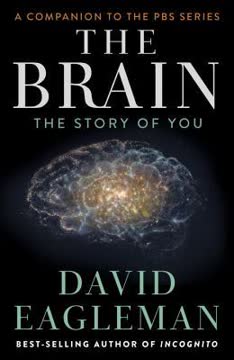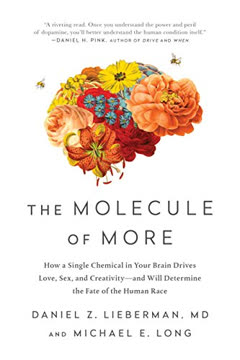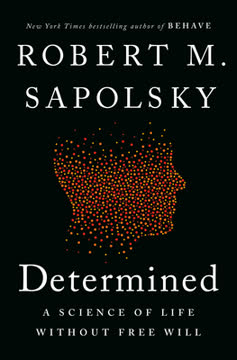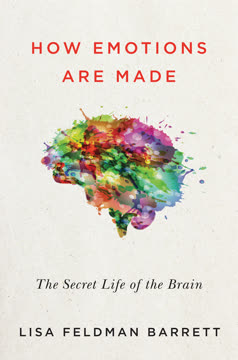Key Takeaways
1. Your brain's primary function is body regulation, not thinking
Your brain's most important job is to control your body—to manage allostasis—by predicting energy needs before they arise so you can efficiently make worthwhile movements and survive.
Allostasis, not cognition. The brain evolved primarily to regulate the body's energy needs and resources, a process called allostasis. This involves predicting and preparing for the body's needs before they arise, ensuring efficient use of energy for survival and reproduction. The brain continually invests energy in anticipation of future needs, balancing withdrawals and deposits in the body's metaphorical energy budget.
Evolution of complexity. As animals evolved larger, more complex bodies, their brains developed increasingly sophisticated systems to manage internal bodily functions:
- Cardiovascular system (heart, blood vessels)
- Respiratory system (lungs, gas exchange)
- Immune system (fighting infections)
- Endocrine system (hormones, metabolism)
These complex systems required a central command center – the brain – to coordinate and regulate them efficiently. Thus, the primary purpose of the brain is to run the body, with cognitive functions like thinking, emotion, and creativity emerging as consequences of this foundational role.
2. The triune brain theory is a myth: You have one integrated brain
The triune brain idea and its epic battle between emotion, instinct, and rationality is a modern myth.
One integrated brain. The popular "triune brain" theory, which suggests the human brain evolved in three distinct layers (reptilian, emotional, and rational), is scientifically inaccurate. Modern neuroscience reveals that the human brain is a single, interconnected structure with no clear divisions between instinct, emotion, and rationality.
Evolutionary continuity. Recent research shows that:
- Reptiles and mammals share many of the same types of neurons
- Brain development follows a common "manufacturing plan" across species
- The human cerebral cortex is not disproportionately large compared to other mammals
- There is no dedicated "emotional" or "rational" brain system
This understanding challenges traditional notions of human nature and the idea that rationality must overcome emotion. Instead, it suggests a more integrated view of brain function, where cognition, emotion, and instinct work together as part of a unified system for body regulation and adaptive behavior.
3. Your brain is a complex, adaptable network, not a fixed structure
A brain network is not a metaphor. It's a description that comes from the best available science about how brains evolved, how they're structured, and how they function.
Dynamic neural networks. The brain is best understood as a complex, interconnected network of neurons rather than a fixed structure with dedicated components. This network is constantly changing and adapting, with neurons forming and breaking connections based on experience and need.
Key features of the brain network:
- Hubs: Densely connected regions that facilitate efficient communication
- Plasticity: The ability to change and reorganize connections over time
- Degeneracy: Multiple neural pathways can produce the same outcome
- Complexity: The capacity to create a vast number of distinct neural patterns
This network structure allows the brain to be incredibly flexible and efficient, adapting to new situations and environments while conserving energy. It explains how the brain can perform a wide range of functions with a single physical structure, and how it can recover from damage by rewiring itself.
4. Early experiences shape brain development through tuning and pruning
Little brains wire themselves to their world.
Experience-dependent development. A baby's brain is not fully formed at birth but continues to develop based on environmental inputs. This process involves two key mechanisms:
- Tuning: Strengthening frequently used neural connections
- Pruning: Eliminating unused or unnecessary connections
Critical role of caregivers. Parents and caregivers play a crucial role in shaping a child's brain development by:
- Regulating the baby's body budget (feeding, comforting, etc.)
- Guiding attention to important stimuli
- Providing rich sensory and social experiences
This developmental process allows the brain to adapt to its specific environment, but it also makes children vulnerable to negative experiences. Chronic stress, neglect, or poverty can have long-lasting effects on brain structure and function, potentially leading to physical and mental health issues later in life.
5. Your brain constantly predicts and constructs your reality
Scientists are now fairly certain that your brain actually begins to sense the moment-to-moment changes in the world around you before those light waves, chemicals, and other sense data hit your brain.
Predictive processing. Rather than passively reacting to sensory input, your brain actively constructs your perception of reality through constant prediction. It uses past experiences and current context to anticipate what you'll see, hear, feel, and do next.
Key aspects of predictive processing:
- Efficiency: Predictions allow faster responses to the environment
- Hallucination: Your conscious experience is a "controlled hallucination" constrained by sensory input
- Learning: Prediction errors drive learning and updating of mental models
This predictive nature of the brain has profound implications for understanding perception, action, and even concepts like free will. It suggests that our experiences and actions are heavily influenced by our past and current state, but also that we have the power to shape our future predictions through deliberate learning and exposure to new experiences.
6. Human brains are interconnected, regulating each other's body budgets
For your whole life, outside of your awareness, you make deposits of a sort into other people's body budgets, as well as withdrawals, and others do the same for you.
Social regulation. Human brains are fundamentally interconnected, constantly influencing each other's physiological states and energy budgets. This mutual regulation occurs through various channels:
- Physical proximity (e.g., touch, synchronized breathing)
- Emotional contagion
- Language and communication
Words as biological regulators. Language has a powerful effect on our biology:
- Kind words can calm and soothe
- Harsh words can trigger stress responses
- Even reading or hearing descriptions can activate corresponding brain regions
This interconnectedness has both positive and negative consequences:
- Benefits: Supportive relationships improve health and longevity
- Risks: Chronic stress from social sources can lead to physical and mental illness
Understanding this social nature of our brains highlights the importance of fostering positive relationships and considering the impact of our words and actions on others' well-being.
7. There is no universal human nature: Brains create diverse minds
Human brains make many different kinds of minds.
Variation is the norm. Rather than a single, universal human nature, our brains create a diverse array of minds shaped by culture, experience, and individual differences. This variation is crucial for the survival and adaptability of our species.
Examples of mind diversity:
- Cultural differences in emotional experiences and expression
- Varied cognitive styles and abilities (e.g., autism spectrum)
- Different ways of understanding and interacting with the world
Plasticity and acculturation. The human brain's plasticity allows for significant adaptation to new environments and cultures throughout life. This process, called acculturation, involves rewiring the brain to efficiently navigate new social and physical contexts.
Recognizing the diversity of human minds challenges simplistic notions of normal vs. abnormal and encourages a more nuanced understanding of mental health, education, and social interaction.
8. The human superpower: Creating shared social reality
Social reality is an incredible gift. You can simply make stuff up, like a meme or a tradition or a law, and if other people treat it as real, it becomes real.
Collective imagination. Humans have a unique ability to create and maintain shared social realities – collectively imagined concepts that shape our world and behavior. This capacity emerges from the interplay of five key abilities (the "Five Cs"):
- Creativity
- Communication
- Copying
- Cooperation
- Compression (abstraction)
Power and responsibility. Social reality allows humans to:
- Create complex societies and institutions
- Collaborate on a massive scale
- Adapt to diverse environments
However, it also comes with risks:
- Potential for manipulation and oppression
- Mistaking social constructs for physical reality
- Unintended consequences on human evolution
Understanding the constructed nature of social reality empowers us to critically examine and shape the shared beliefs and institutions that govern our lives. It highlights both the remarkable adaptability of human societies and the responsibility we have in creating a world that promotes well-being for all.
Last updated:
FAQ
What's "Seven and a Half Lessons About the Brain" by Lisa Feldman Barrett about?
- Overview of the book: "Seven and a Half Lessons About the Brain" is a collection of short essays that explore the brain's evolution, function, and its role in human nature.
- Purpose: The book aims to intrigue and entertain readers with scientific insights about the brain, challenging common misconceptions.
- Structure: It consists of seven full lessons and one half-lesson, each focusing on different aspects of neuroscience and psychology.
- Author's approach: Lisa Feldman Barrett uses informal essays to present scientific nuggets, encouraging readers to think about the kind of human they are or want to be.
Why should I read "Seven and a Half Lessons About the Brain"?
- Myth-busting content: The book debunks popular myths about the brain, such as the triune brain theory, providing a more accurate understanding.
- Engaging writing style: Barrett's informal and accessible writing makes complex scientific concepts understandable and enjoyable.
- Insight into human nature: It offers a deeper understanding of how the brain shapes our thoughts, emotions, and behaviors.
- Relevance to everyday life: The lessons have practical implications for personal growth, empathy, and social interactions.
What are the key takeaways of "Seven and a Half Lessons About the Brain"?
- Brain's primary function: The brain's most important job is to manage the body's energy needs, not just to think.
- Predictive nature: The brain constantly predicts and prepares for future needs, influencing our perceptions and actions.
- Social interdependence: Human brains are wired to work with others, affecting our health and well-being.
- Cultural influence: Our brains are shaped by cultural and social environments, leading to diverse kinds of minds.
How does Lisa Feldman Barrett explain the brain's evolution in the book?
- Evolutionary journey: Barrett describes the brain's evolution from simple creatures like amphioxi to complex human brains.
- Body budgeting: The brain evolved to manage the body's energy needs efficiently, a process known as allostasis.
- Complexity and reorganization: As brains evolved, they became more complex and reorganized to handle larger bodies and more sophisticated functions.
- Misconceptions addressed: The book challenges the idea of a triune brain, emphasizing that human brains did not evolve in layers.
What is the "triune brain" theory, and why does Barrett consider it a myth?
- Triune brain theory: This theory suggests the brain evolved in three layers: a reptilian brain for survival, a limbic system for emotions, and a neocortex for rational thought.
- Scientific inaccuracies: Barrett explains that this model is outdated and not supported by modern neuroscience.
- Brain reorganization: Instead of evolving in layers, brains reorganize as they grow larger, with no distinct emotional or rational parts.
- Impact on understanding: The myth of the triune brain has led to misconceptions about human behavior and rationality.
How does the brain's predictive nature influence our perceptions and actions?
- Predictive processing: The brain uses past experiences to predict and prepare for future events, shaping our perceptions and actions.
- Constructed experiences: Our experiences are a combination of sensory data and the brain's predictions, often leading to "controlled hallucinations."
- Learning from predictions: When predictions are incorrect, the brain updates its models, a process known as learning.
- Implications for free will: This predictive nature suggests that our actions are influenced by past experiences, raising questions about free will and responsibility.
What role does social interaction play in brain function according to Barrett?
- Co-regulation: Human brains regulate each other's body budgets through social interactions, affecting health and well-being.
- Empathy and prediction: Our ability to empathize and predict others' thoughts and feelings is influenced by social connections.
- Impact of words: Words can significantly affect our nervous systems, highlighting the power of language in social interactions.
- Loneliness and health: Lack of social connections can lead to loneliness, which negatively impacts physical and mental health.
How does Barrett describe the diversity of human minds in the book?
- Cultural influence: Different cultures shape different kinds of minds, leading to diverse mental experiences and behaviors.
- Variation as a norm: Human minds vary widely, and this variation is crucial for the survival and evolution of our species.
- No universal mind: There is no single human nature; instead, minds are shaped by individual experiences and cultural contexts.
- Adaptability: The brain's ability to adapt to different environments and cultures is a testament to its complexity and flexibility.
What is social reality, and how do our brains create it?
- Definition of social reality: Social reality consists of concepts and constructs that exist only in human minds, like money, borders, and laws.
- Five Cs: Creativity, communication, copying, cooperation, and compression are key brain functions that enable the creation of social reality.
- Abstraction and compression: The brain's ability to abstract and compress information allows us to impose new functions on physical objects.
- Impact on evolution: Social reality can influence human evolution by altering social structures and cultural practices.
What are the best quotes from "Seven and a Half Lessons About the Brain" and what do they mean?
- "Your brain is not for thinking." This quote emphasizes the brain's primary role in managing the body's energy needs rather than just processing thoughts.
- "Brains are predicting organs." It highlights the brain's constant prediction and preparation for future events, shaping our perceptions and actions.
- "We create a fantasy world to be able to stay." This reflects the idea that social reality helps us navigate and make sense of the physical world.
- "Variation is the norm." It underscores the diversity of human minds and the importance of variation for the survival of our species.
How does Barrett address the concept of free will in the book?
- Predictive nature and free will: The brain's predictive nature suggests that our actions are influenced by past experiences, raising questions about free will.
- Responsibility for actions: While predictions guide our actions, Barrett argues that we have some control over our future predictions and behaviors.
- Changing predictions: By learning new skills and experiences, we can alter our brain's predictions and gain more control over our actions.
- Implications for personal growth: Understanding the brain's predictive nature can empower individuals to take responsibility for their actions and shape their future.
What practical advice does Barrett offer for understanding and improving brain function?
- Challenge assumptions: Question common myths about the brain, like the triune brain theory, to gain a more accurate understanding.
- Cultivate empathy: Practice understanding others' perspectives to improve social interactions and reduce polarization.
- Embrace diversity: Recognize and appreciate the diversity of human minds, which can enhance personal growth and adaptability.
- Leverage social connections: Foster supportive relationships to improve health and well-being, as social interactions play a crucial role in brain function.
Review Summary
Seven and a Half Lessons About the Brain offers accessible insights into neuroscience, debunking common myths about brain structure and function. Readers appreciate Barrett's clear writing style, humor, and ability to explain complex concepts simply. The book covers topics like brain evolution, prediction, social connections, and how culture shapes cognition. While some find it overly simplistic, many recommend it as an engaging introduction to current brain science. Critics note its brevity and occasional political commentary, but most praise its ability to challenge outdated ideas and stimulate further interest in neuroscience.
Similar Books






Download PDF
Download EPUB
.epub digital book format is ideal for reading ebooks on phones, tablets, and e-readers.





